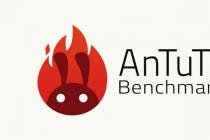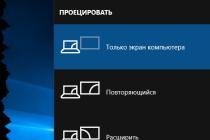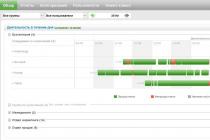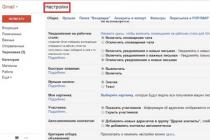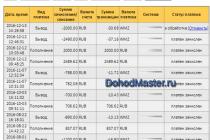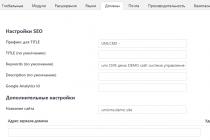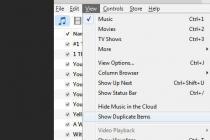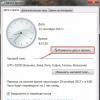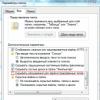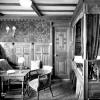Thus, on the basis of the initial data on the automated functions and the basic requirements for the complex of technical means, we will design a computer network for an information system in our subject area. Thirdly, the lack of a network in the company will entail significant costs for the purchase of various devices for each computer and expensive software. So, the design of a network for an enterprise is due to the following reasons: Within the framework of the work of a given enterprise, it is necessary to optimize the technological ...
Share your work on social media
If this work did not suit you at the bottom of the page there is a list of similar works. You can also use the search button
Other similar works that may interest you. Wshm> |
|||
| 14734. | Block diagram of the information transmission system (SPI) | 48.81 KB | |
| The theory of electrical communication. Communication systems play an increasing role in people's lives, uniting and bringing together individual countries, continents and space objects. | |||
| 1426. | Organization of a workable local area network for automating the workflow of a small enterprise | 805.67 KB | |
| Network topologies Connect the printer to a local network. Computer networks are essentially distributed systems. Computer networks, also called computer networks or data transmission networks, are the logical result of the evolution of two most important scientific and technical branches of modern civilization - computer and telecommunication technologies. | |||
| 8370. | Setting up folders and files. Setting up operating system tools. Application of standard utilities. The principles of linking and embedding objects. Networks: basic concepts and classification | 33.34 KB | |
| Setting up operating system tools. Configuring the operating system tools All settings are carried out as a rule through the Control Panel. Setting up the operating system style Setting up the system style is carried out along the path: Start - Control Panel - All elements of the control panel - System. The Advanced system settings tab opens the System Properties window in which the Advanced tab is the most important for configuration. | |||
| 1029. | Development of software for the laboratory complex of the computer training system (KOS) "Expert Systems" | 4.25 MB | |
| The field of AI has more than forty years of development history. From the very beginning, it considered a number of very complex problems, which, along with others, are still the subject of research: automatic theorem proving ... | |||
| 341. | The concept of computer technology for software development and its workplaces | 19.9 KB | |
| There are some difficulties in the development of a strict definition of CSEtechnology of computer technology for software development. In this case, the CSE technology began to fundamentally differ from the traditional manual technology of software development: not only the content of technological processes changed, but also their entire set. This means that the most essential in computer technology has not been highlighted. | |||
| 12241. | RESEARCH OF METHODS AND MEANS OF AUTOMATION AND WATER ACCOUNTING ON IN-HOUSE IRRIGATION NETWORK | 50.2 KB | |
| The work is part of the research of the Department of Automation and Control of Technological Processes and is devoted to the improvement of methods and technical means for measuring the level and accounting of water on the on-farm irrigation network. The main place in the work is devoted to the study and development of the principle of constructing a system for measuring and accounting for the SIUCH water on on-farm irrigation ditches. When solving issues of measuring and accounting for water, it is necessary to correctly choose the principle of building a system ... | |||
| 3612. | Development of a multiservice network project, selection of network technology, development of its structure, installation of equipment and calculation of its configuration | 6.93 MB | |
| In this diploma project, the problem of building a multiservice broadband data transmission network for the provision of Triple Play services, based on FTTB technology, has been solved. The analysis of the initial data has been carried out. A substantiation of the selected technology and network topology is proposed, the equipment is calculated and its configuration is selected, the load on the network is calculated, technical and economic indicators are given, and life safety measures are developed. | |||
| 17081. | Increasing the efficiency of regenerative braking of DC electric locomotives by using an inertial energy storage device with a built-in valve-inductor electric machine in the traction network | 1.3 MB | |
| A distinctive feature of the proposed technical solution from the existing options is that it is proposed to use inertial energy storage devices INE with a built-in valve-inductor machine VIM as energy storage devices. The purpose of the research: increasing the efficiency of regenerative braking of direct current electric locomotives by using an INE with a built-in VIM in the traction network. Research object: EPS traction network INE with built-in VIM. Subject of research: model methods and criteria for assessing the performance of EPS ... | |||
| 8331. | Integrated software packages. A suite of office programs Microsoft Office 2003, 2007 and 2010. Tools for automating the development of documents in MSWord. Tools for creating complex documents. Computer security issues: viruses and anti-virus measures | 26.36 KB | |
| The Microsoft Office 2003 2010 suites include general-purpose applications: MS Word word processor; spreadsheet processor MS Excel spreadsheets; database management system MS ccess; tool for preparing MS PowerPoint presentations; a tool for organizing group work MS Outlook. In comparison with the previous versions, it as well as in other general-purpose applications of the MS Office package added the following new features: a new more attractive interface; use in application windows ... | |||
| 18518. | Optimization of the transportation process at a given landfill through the introduction of terminal technology | 12.76 MB | |
| Characteristics of the types of rolling stock for transportation services. As the economy stabilizes, terminals will become a natural element of the infrastructure for the domestic transport market. Container is a standard capacity used for bulk transportation of goods by various types of transport. It is, as it were, a removable body of a vehicle body that is adapted for mechanized loading and unloading and reloading from one type of transport to another. | |||
The block diagram of a GSM mobile communication system is shown in Figure 3.1. The GSM network is divided into two systems: a switching system (SSS) and a base station system (BSS). In the GSM standard, the functional interfacing of the system elements is carried out through interfaces, and all network components interact in accordance with the CCITT SS No. 7 signaling system (CCITT SS No. 7).
Mobile Switching Center MSC serves a group of cells and provides all types of connections that a mobile station needs in the process. The MSC is similar to a switching office and is an interface between fixed networks (PSTN, PDN, ISDN, etc.) and a mobile communications system. It provides call routing and call control features. In addition to performing the functions of a conventional switching station, the MSC is responsible for the functions of switching radio channels. These include "handover", during which continuity of communication is achieved when a mobile station moves from cell to cell and switching of working channels in a cell when interference or malfunctions occurs.
Figure 3.1 - Block diagram of a GSM mobile communication system
This diagram shows: MS - mobile station; BTS - transmitting and receiving base stations; BSC - base station controller; TCE - transcoder; BSS - base station equipment; MSC - Mobile Switching Center; HLR - position register; VLR - movement register; AUC - Authentication Center; EIR - equipment identification register; OMC - Operations and Maintenance Center; NMC network control center.
MSC provides services to mobile subscribers located within a specific geographic area.
The MSC manages the call setup and routing procedures, accumulates the call data necessary for billing for the services provided by the network.
The MSC maintains security procedures applied to control access to radio links. The MSC manages location registration procedures to ensure call delivery to roaming mobile subscribers from PSTN subscribers and to facilitate conversation when a mobile station moves from one service area to another. The GSM standard also provides call transfer procedures between networks (controllers) belonging to different MCS.
MSC generates the data necessary for billing the communication services provided by the network, accumulates data on the conversations that took place and transmits them to the settlement center (billing center). The MSC also compiles the statistics needed to monitor and optimize the network.
The MSC not only participates in call control, but also manages location registration and handover procedures.
| |
Position register HLR is a database of subscribers permanently registered in the network. Information about the subscriber is entered into the HLR at the time of subscriber registration and is stored until the subscriber stops using this communication system and is removed from the HLR register.
The database contains identification numbers and addresses, subscriber identity parameters, the range of communication services, routing information, subscriber roaming data is recorded, including data on the temporary mobile subscriber identification number (TMSI) and the corresponding VLR. Long-term data stored in the position register HLR are shown in table 3.3.
All MSC and VLR networks have remote access to the data contained in the HLR, including those related to other networks when providing inter-network roaming of subscribers. If there are several HLRs in the network, each HLR represents a specific part of the network's overall subscriber database. Access to the subscriber database is carried out by the IMSI or MS ISDN number (mobile subscriber number in the ISDN network).
HLR can be performed both in its own node of the network, or separately. If the capacity of the HLR is depleted, then an additional HLR can be added. In the case of organizing several HLRs, the database remains unified - distributed. The subscriber data record is always the only one. The data stored in the HLR can be accessed by MSCs and VLRs belonging to other networks as part of providing inter-network roaming to subscribers.
Table 3.3 - Long-term data stored in the register HLR
| Composition of long-term data stored in the HLR | |
| IMS1 - International Mobile Subscriber Identity | |
| Mobile station number in the international ISDN network | |
| Mobile station category | |
| Authentication key | |
| Types of provision of support services | |
| Closed user group index | |
| Closed user group lock code | |
| The composition of the main calls that can be transferred | |
| Caller announcement | |
| Called Party Number Identification | |
| Schedule | |
| Called subscriber announcement | |
| Signaling control when connecting subscribers | |
| Properties (tools) of a closed user group | |
| Closed user group benefits | |
| Barred outgoing calls in a closed user group | |
| Maximum number of subscribers | |
| Passwords used | |
| Priority access class | |
| Barred incoming calls in a closed subscriber group |
Move register VLR also designed to control the movement of a mobile station from one area to another. The VLR database contains information about all mobile subscribers currently located in the MSC service area. It enables the operation of a mobile station outside the HLR controlled area.
When a subscriber moves to the service area of a new MSC, the VLR connected to this MSC requests subscriber information from the HLR that stores the subscriber's data. The HLR sends a copy of the information to the VLR and updates itself with the location information of the subscriber. When a subscriber calls from a new service area, the VLR already has all the information it needs to service the call. In the case of a subscriber roaming into the coverage area of another MSC, the VLR requests information about the subscriber from the HLR to which this subscriber belongs. The HLR, in turn, transmits a copy of the subscriber data to the requesting VLR and in turn updates the information about the new location of the subscriber. After the information is updated, the MS can make outgoing / incoming connections.
To ensure the safety of data in the HLR and VLR registers, their memory devices are protected. The VLR contains the same data as the HLR. This data is stored in the VLR while the subscriber is in the controlled area. The temporary data stored in the VLR register are shown in table 3.4.
Table 3.4 - Temporary data stored in the VLR register
| Composition of temporary data stored in HLR and VLR | ||||||||||
| HLR | VLR | |||||||||
| 1 | TMSI - Temporary International User Identification Number | |||||||||
| Temporary mobile station number assigned by the VLR | Location identification | |||||||||
| VLR Move Register Addresses | Guidelines for Using Basic Services | |||||||||
| Moving areas of the mobile station | Cell number "handover" | |||||||||
| Cell number during handover | Authentication and encryption options | |||||||||
| Registration status | ||||||||||
| No answer (disconnect) timer | ||||||||||
| The composition of the currently used passwords | ||||||||||
| Communication activity | ||||||||||
When roaming a mobile station, the VLR assigns it a number (MSRN). When the mobile station receives an incoming call, the VLR selects its MSRN and transmits it to the MSC, which routes the call to base stations near the mobile subscriber.
The VLR manages the authentication procedures during call processing. At the operator's discretion, the TMSI can be periodically changed to complicate the subscriber identification procedure. Access to the VLR database can be provided through IMSI, TMSI or through MSRN. In general, VLR is a local database of a mobile subscriber for the area where the subscriber is located. This eliminates persistent HLR calls and reduces call handling time.
AUC Authentication Center designed to authenticate subscribers in order to exclude unauthorized use of the resources of the communication system. The AUC decides on the parameters of the authentication process and determines the encryption keys of the subscriber stations based on a database located in the Equipment Identification Register (EIR). Each mobile subscriber, while using the communication system, receives a standard subscriber authentication module (SIM), which contains: an international identification number (IMSI), his own individual authentication key K i and authentication algorithm A3. With the help of the information recorded in the SIM, as a result of the mutual data exchange between the mobile station and the network, a complete authentication cycle is carried out and the subscriber's access to the network is allowed. The subscriber authentication procedure is shown in Figure 3.2.

Figure 3.2 - Scheme of the authentication procedure
The network transmits a random number (RAND) to the mobile station. On it with the help K i and authentication algorithm A3 the response value is determined (SRES), i.e. SRES = Ki *. The mobile station sends the computed SRES value to the network. The network checks the received SRES value against the SRES value. , computed by the network. If the values match, the mobile station is allowed to send messages. Otherwise, the connection is interrupted and the indicator of the mobile station shows that the identification did not take place. To ensure privacy, the SRES is computed within the SIM. Unclassified information is not processed in the SIM module.
Equipment identification register EIR contains a database for validating the International Mobile Station Equipment Identity (IMEI). The EIR database consists of lists of IMEI numbers, organized as follows:
White list - contains IMEI numbers, about which there is information that they are assigned to authorized mobile stations;
Blacklist - contains the IMEI numbers of mobile stations that are stolen or denied service for any reason;
Gray list - contains the IMEI numbers of mobile stations that have problems that are not grounds for being included in the "black list".
The EIR database is accessed by the MSCs of this network, and can also be accessed by the MSCs of other mobile networks.
OMC Operation and Maintenance Center is the central element of the GSM network. It provides management of network elements and quality control of its operation. OMC connects with other network elements via X.25 packet transmission channels. OMC provides processing of alarms intended to alert the operating personnel, and registers information about emergency situations in the network elements. Depending on the nature of the malfunction, the OMC ensures its elimination automatically or with the active intervention of personnel. OMC can check the status of the network equipment and call progress of the mobile station. OMC allows you to regulate the load on the network.
NMC Network Management Center allows for rational hierarchical management of the GSM network. The NMC provides network traffic management and network supervisory control for complex emergency situations. In addition, the NMC monitors and displays the status of the automatic network management devices. This allows NMC operators to monitor regional problems and provide assistance in resolving them. In extreme situations, NMC operators may employ management procedures such as “priority access,” where only high priority subscribers (emergency services) can access the system. The NMC monitors the network and its operation at the network level and therefore provides the network with the data it needs to grow optimally.
Thus, NMT personnel can focus on solving long-term strategic problems related to the entire network as a whole, and local personnel of each OMC / OSS can focus on solving short-term regional or tactical problems.
Base station equipment BSS consists of a base station controller (BSC) and base transceiver stations (BTS). The base station controller can control multiple BTSs. The BSC manages the allocation of radio channels, monitors connections, adjusts their sequencing, provides frequency hopping, signal modulation and demodulation, message coding and decoding, speech coding, adaptation of speech, data and call rates. The BSS, together with the MSC, performs the functions of freeing the channel if the call does not go through due to radio interference, and also carries out priority transmission of information for some categories of mobile stations.
Transcoder TCE ensures the conversion of the output signals of the MSC speech and data transmission channel (64 kbit / s PCM) to the form corresponding to the GSM recommendations for the radio interface (Rec. GSM 04.08), with a speech transmission rate of 13 kbit / s - the full-speed channel. The standard provides for the use in the future of a half-speed voice channel of 6.5 kbps. Reducing the transmission rate is achieved by using a special speech-converting device using linear predictive coding (LPC), long-term prediction (LTP), residual impulse excitation (RPE or RELP). The transcoder is usually co-located with the MSC. When transmitting digital messages to the base station controller BSC, stuffing (adding additional bits) of the 13 kbit / s information flow up to a transmission rate of 16 kbit / s is carried out. Then the received channels are compressed with a multiplicity of 4 into a standard 64 kbit / s channel. This is how the 30-channel PCM line defined in the GSM Recommendations is formed, providing the transmission of 120 voice channels. Additionally, one channel (64 kbit / s) is allocated for the transmission of signaling information, the second channel (64 kbit / s) can be used to transmit data packets conforming to the CCITT X.25 protocol. Thus, the resulting transfer rate on the specified interface is 30x64 + 64 + 64 = 2048 kbps.
Identifiers- a number of numbers that the GSM network uses to determine the location of the subscriber when establishing a connection. These identifiers are used to route calls to the MS. It is important that each identification number is unique and always correctly identified. The description of identifiers is given below.
IMSI(International Mobile Subscriber Identity) uniquely describes a mobile station in the global global GSM network. Most operations within the GSM network are performed using this number. The IMSI is stored at the SIM, at the HLR, at the serving VLR, and at AUC. According to the GSM specifications, the length of the IMSI is usually 15 digits. IMSI consists of three main parts:
- MCC
- MNC
- MSIN(Mobile Station Identification Number) - MS identification number.
MSISDN(Mobile Station ISDN Number) is the subscriber's number that we dial when we want to call him. One subscriber can have several numbers. The numbering plan for MSISDN is fully consistent with the PSTN numbering plan:
- SS(Country Code) - country code;
- NDC(National Destination Code) - national destination code (city or network);
- SN(Subscriber Number) - subscriber number.
Each PLMN network has its own NDC. In the communication network of the Republic of Kazakhstan NDC + SN called the National Significant Number. NDC for mobile networks are designated as DEF and are called "non-geographic area code". In Russia, several NDCs are defined for each PLMN. The MSISDN can be of variable length. The maximum length is 15 digits, no prefixes are included (+7). An incoming connection with a Beeline subscriber is made by dialing +7 777 ХХХ ХХХХ or with the code 705.
TMSI(Temporary Mobile Subscriber Identity) - a temporary IMSI number that can be issued by MS upon registration. It is used to keep the privacy of the movement of the mobile station. MS will always go on the air with a new TMSI number. TMSI does not have a rigid structure like IMSI, its length is usually 8 digits. Since the TMSI is half the size of the IMSI, paging in one cycle is performed for two subscribers, which also reduces the load on the processor. Each time the MS makes a request for system procedures (LU, attempt to call or service activation), the MSC / VLR puts the new TMSI in line with the IMSI, MSC / VLR. transfers TMSI to MS, which stores it in the SIM card. Signaling between МSC / VLR. and MS is used only on the basis of TMSI. Thus, the real IMSI subscriber number is not transmitted over the air. IMSI is used when the Location Update procedure fails or the TMSI is not assigned.
IMEI(International Mobile Terminal Identity) is used to uniquely identify a mobile terminal on the network. This code is used in communications security procedures to identify stolen equipment and prevent unauthorized access to the network. According to the GSM specifications, the IMEI is 15 digits long:
- TAS(Ture Arrgoval Code) - code of the approved type sample (6 digits);
- FАС(Final Assembly Code) - code of the final assembled product,
assigned by the manufacturer (2 digits);
- SNR(Serial Number) - individual serial number (6 digits).
Completely identifies all equipment, taking into account the TAC and FAC codes.
- Spare- free number. Reserved for future use.
When this code is transmitted to MS, the value of this code must always be "0".
IMEISV(International Mobile Terminal Identity and Software Version number) - provides a unique identification of each MT, and also ensures that the version of the software installed in the MS is compatible with the operator. The software version is an important parameter as it affects the services available to the MS, as well as the ability to perform speech coding. So, for example, the PLMN needs to know the MS speech coding capabilities at call setup (eg half rate / full rate, etc.). These possibilities are displayed using IOMEISV, the first 14 digits of which repeat IMEI, and the last 2:
- SVN(Software Version number) - the software version number allows the MS manufacturer to identify the different software versions of the MS approved type sample. SVN value 99 is reserved for future use.
МSRN(Mobile Station Roaming Number) - a temporary number required to route the incoming connection to the same МSS, in which МS is now located. The MSRN usage time is very short - only the incoming connection is pushed through, after which the number is released and can be used to establish the next connection. МSRN consists of three parts, the same as in MSISDN, but in this case SN means the address of the serving МSC / VLR.
LAI(Location Area Identity) - an area number (LA) that uniquely describes the LA within the entire worldwide GSM network. LAI consists of the following parts:
- MCC(Mobile Country Code) - mobile country code (3 digits);
- MNC(Mobile Network Code) - mobile operator code (3 digits);
- LAC(Location Area Code) - location code, maximum LAC length is 16 bits, which allows to define 65536 different LAs within one PLMN.
- CGI(Cell Global Identity) is used to identify a specific cell within an LA. Cell identification is accomplished by adding the Cell Identity (CI) parameter to the LAI components. CI is 16 bits in size.
- BSIC(Base Station Identity Code) enables the MS to distinguish between cells with the same frequencies. BSIC consists of:
- NCC(Network Color Code) - network color code. Used to delineate operator coverage areas where operator networks overlap.
- BCC(Base station Color Code) - color code of the base station. Used to distinguish between base stations using the same frequency.
Federal Agency for Education of the Russian Federation
"Petrovsky College"
Course work
in the discipline "Computer networks and telecommunications"
Topic: "Designing an educational local area network"
Completed by: Kurilovich N.G.
Checked by: Y.P. Markelov
Saint Petersburg 2010
Introduction
Stage 1. Infological examination of the automation object
Stage 2. Design stage
Stage 3. Calculation of the network configuration
Conclusion
Introduction
Our time is characterized by the rapid development of telecommunication technologies.
Connecting computers in a network has significantly increased labor productivity. Computers are used both for production (or office) needs and for training.
A local network is a group of interconnected computers, servers, printers located within a building, office or room. The local network makes it possible to share access to shared folders, files, equipment, various programs, etc.
Using the resources of the local network makes it possible to significantly reduce the financial costs of the enterprise, increase the level of security of storage of important data, reduce the time spent by the company's employees on solving various types of tasks, as well as increase the overall efficiency of work.
Computers can be connected to each other using various access media: copper conductors (twisted pair), optical conductors (optical cables) and through a radio channel (wireless technologies). Wired connections are established via Ethernet, wireless - via Wi-Fi, Bluetooth, GPRS and other means. A separate local area network can have gateways with other local area networks, as well as be part of a global computer network (for example, the Internet) or have a connection to it.
LAN (Local Area Network) is a local area network designed to unite geographically grouped network devices. All network devices inside the LAN have information about the MAC addresses of neighboring network adapters and exchange data at the second (link) layer of the seven-layer OSI model.
Main advantages of LAN:
1. Reducing network load
2. Information security
a. Combining user workstations into functional groups between which unauthorized data exchange at the data link level is impossible.
b. Differentiation of access to servers and printers.
c. Internet access control
d. Mutual isolation of network segments using different network protocols (for example: virtual network for IPX users, virtual network for Apple users)
3. Reduced operating costs
a. Low cost of moving, changing and adding network users
b. Reducing the number of unused switch ports
4. Improving the reliability and resiliency of the network
a. Isolation of broadcast storms
b. Faster localization of faults
c. More complete traffic control
d. Effective use of ip addresses
Disadvantages of LAN:
1. Increase in start-up costs
2. The need for additional training of personnel.
Stage 1. "Infological examination of the automation object"
Targets and goals
The main objective of the course project is the design and calculation of a peer-to-peer educational LAN on the topology "Star" and "Shared bus" OIPTS Petrovsky College.
Computers will be used by students for the purpose of teaching, conducting practical classes. The network must ensure the smooth functioning and interoperability of the various distributed applications that reside on the network.
List of academic disciplines
Table 1. List of academic disciplines and software required for them
| DISCIPLINES | SOFTWARE |
| Microprocessors and microprocessor systems | ElectronicWorkBench 5.0 |
| SDE 8080i | |
| FD51 Rus | |
| Information Technology | Microsoft Office 2010 Home and Student |
| Stamina | |
| Algorithmization and programming | Borland C ++ Builder 6.0 |
| Software for computer networks and WEB servers | Apache 2.0 |
| Denver | |
| Application packages | Compass-3D v.12 |
| Maintenance of computer equipment | Virtual PC 2007 |
| WinRAR 3.94 | |
| Opera 11 | |
| Google Chrome 8.0 | |
| Adobe Acrobat Reader 9.4 | |
| CPUID CPU-Z 1.56 | |
| GPU-Z 0.45 | |
| Acronis Disk Director 11 Home |
Each workstation will be equipped with a 32-bit Window 7 HomeBasicDVD (RUSDVD) operating system. This choice is explained by the fact that Windows 7 includes both some developments that were excluded from Windows Vista, as well as innovations in the interface and built-in programs, and it has more features than previous versions of Windows and is more optimized.
The cost of one license OS MS Windows 7 Home Basic 32-bit Rus 1pk OEI DVD for one PC (workstation) is 3799 rubles. Therefore, for 34 workstations, the total cost will be 129,166 rubles.
Workstation software
In addition to the operating system, workstations need to install the main package of applications and utilities that meet the requirements of the LAN.
1. MS Office 2007 Professional Win32 Rus AE CD BOX (for educational institutions)
Table 3. System requirements for MSOfficeProfessional
2. KOMPAS-3DV12
Table 4. System requirements for KOMPAS-3DV12
3. Acronis Disk Director 11 Home
Table 5. System Requirements for Acronis Disk Director 11 Home
Typical workstation configuration
Table 7. Calculating the cost of a workstation
| Components | Product description | Price |
| Frame | InwinEMR-006, microATX, Minitower, 450W, Black / Silver | 2290 p. |
| Motherboard | Gigabyte GA-H55M-S2H, iH55, Socket 1156, 2xDDR3 2200MHz, 2 x PCI Express x16 + Integrated Intel HD Graphics, 6 x SATA II, LAN 1 Gbit, microATX | 3290 RUR |
| CPU | Intel Core i3 530 2.93GHz, 2х256 kb, 4 Mb, LGA1156 BOX | 4390 RUR |
| RAM | Kingston HyperX (KVR1333D3N9K2 / 2G) Kit of 2, DDR3 2048Mb (2x1024), 1333MHz | 1590 p. |
| HDD | Western Digital WD5000KS / AAKS, 3.5 ", 500Mb, SATA-II, 7200 rpm, 16Mb Cache | 1840 p. |
| Video card | Built-in video adapter | 0 p. |
| Optical drive | Asus DRW-24B3ST, DVD RW, SATA, Black | 1090 p. |
| LAN | Built-in 1Gbit network adapter | 0 p. |
| Monitor | Samsung EX1920, 18.5 "/ 1366 х 768 pix / 16: 9, 1000: 1, DC - 5,000,000: 1/250 cd / m² / 5 ms, D-Sub / DVI, TFT Black | 5990 p. |
| Network filter | Vektor Lite, 1.8 m | 399 p. |
| Input Devices | Logitech Desktop MK120 Black Keyboard + Mouse Kit | 680 p. |
| TOTAL: | 21560 p. | |
In total, the cost of one workstation was 21,560 rubles. The designed network consists of 34 workstations, which will amount to 733,000 rubles.
The typical configuration was selected using information from the KEY Computer Center store website. (http://www.key.ru/)
Conclusion on the first stage
Upon completion of the first stage of the course project on computer networks and telecommunications, I compiled a list of all software installed on workstations. A typical configuration of a workstation was drawn up taking into account system requirements, application and system software, and the required amount of memory on the hard disk was calculated by summing the amount of memory required for the software. The RAM and processor are selected taking into account the system requirements of the applications, with a margin of 30%.
Stage 2. Design stage
Targets and goals
The purpose of the second stage of the course project is to develop specifications for communication equipment, the cost of work and plans for workspaces connected to a LAN, indicating the location of PCs and cable lines in them.
For each room, it is necessary to draw up a specification of communication equipment, after which, draw up a general plan of all LAN rooms and a specification of all equipment.
Choosing a cable system
The choice of a cable system depends on the intensity of network traffic, requirements for information protection, maximum distance, requirements for cable characteristics, and the cost of implementation.
Twisted pair (twistedpair) - a type of communication cable, is one or more pairs of insulated conductors, twisted together and covered with a plastic sheath. It is twisting that prevents some types of interference induced on the cable. Typically Ethernet 10Base-T uses a twisted pair cable. One transmit and one receive (AWG 24).
Thin coaxial (RG-58 or "Thin Ethernet") is an electrical cable consisting of a center conductor and a screen located coaxially and used to transmit high-frequency signals. Characteristic impedance 50 Ohm, diameter 0.25 inches, maximum length of the cable segment 185 meters. Rule 5.4.3 applies 10BASE2 standard . Coaxial cable is more noise-resistant, signal attenuation in it is less than in twisted pair.
Passive LAN equipment includes:
1) The cable itself
2) RJ-45 wall sockets
3) Patch panels
4) Repeaters
5) Patch cords (subscriber cords) with RJ-45 connectors (cable for connecting wall sockets with connectors on the computer's network adapter).
The laying of cable systems in workrooms is carried out on the basis of a plan for this room, taking into account the specifications for consumables and accessories for this room.
When designing cabling systems, the characteristics and limitations of the various cabling systems need to be considered:
1) The maximum length of the cable segment according to its type
2) Cable throughput
3) Availability of equipment that provides interaction with other cable systems
After analyzing the characteristics of various types of cable, the physical location of computers, we choose a 10Base-T twisted pair cable and a thin coaxial.
Choosing a network topology
Network topology is a way of describing the configuration of a network, a diagram of the location and connection of network devices.
There are several topology options for network design and construction. Below is a description of some of them.
Bus topology
The common bus topology assumes the use of a single cable to which all computers on the network are connected. A message sent by a workstation is propagated to all computers on the network. Each machine checks - to whom the message is addressed and, if to her, then processes it. Special measures are taken to ensure that when working with a common cable, computers do not interfere with each other to transmit and receive data.
With such a connection, computers can transmit information only one by one, because there is only one communication line. Otherwise, the transmitted information will be distorted as a result of overlap (conflict, collision).
Fig. 1 Topology Common bus
The bus is not afraid of failures of individual computers, because all other computers on the network can continue to exchange normally. In addition, since only one cable is used, the entire network is disrupted in the event of a break. It may seem that the bus is not afraid of a cable break, since in this case there are two fully functional buses. However, due to the peculiarity of the propagation of electrical signals along long communication lines, it is necessary to provide for the inclusion of special devices at the ends of the bus - Terminators.
When building large networks, the problem of limiting the length of the connection between nodes arises, in which case the network is divided into segments that are connected by various devices - repeaters, hubs or hubs. For example, Ethernet technology allows you to use a cable no longer than 185 meters.

Fig. 2 Topology common bus with repeaters
Advantages:
1) Short network setup time;
2) Cheap (less cable and network devices required);
3) Easy to customize;
4) Failure of the workstation does not affect the operation of the network.
Flaws:
1) Any malfunctions in the network, such as a cable break, failure of the terminator, completely destroy the operation of the entire network;
2) Complex localization of faults;
3) With the addition of new workstations, network performance decreases.
Star topology
A star is a topology with an explicitly dedicated center to which all other subscribers are connected. All information exchange is carried out exclusively through the central computer, which thus bears a very heavy load, therefore it cannot be engaged in anything other than the network.
As a rule, it is the central computer that is the most powerful, and it is on it that all the functions of managing the exchange are entrusted. In principle, no conflicts in a network with a star topology are possible, since the management is completely centralized.
The failure of a peripheral computer does not in any way affect the functioning of the rest of the network, but any failure of the central computer makes the network completely inoperative. Therefore, special measures must be taken to improve the reliability of the central computer and its network equipment. A break in any cable or a short circuit in it in a star topology disrupts communication with only one computer, and all other computers can continue to work normally.

Fig. 4 Star topology
There are only two subscribers in the star on each communication line: the central one and one of the peripheral ones. Most often, two communication lines are used to connect them, each of which transmits information in only one direction. Thus, there is only one receiver and one transmitter on each link. All this greatly simplifies the network equipment in comparison with the bus and eliminates the need for additional external terminators. The problem of signal attenuation in the communication line is also solved in the "star" more easily than in the "bus", because each receiver always receives a signal of the same level.
Various other types of topologies can be built on the basis of the "star" topology, as if extending it. For example, you can add another hub with a certain number of ports to an existing hub on the network and thereby add new users to the network.
This topology is based on twisted pair cabling, although if you are using a hub with an additional port for coaxial cable connections, this connection can be used. For example, you can connect several more workstations to a common network by topology, for example, "bus". Thus, almost any mixed topology can be made from this topology.
Advantages:
1) the failure of one workstation does not affect the operation of the entire network as a whole;
2) good scalability of the network;
3) easy troubleshooting and network breaks;
4) high network performance (subject to correct design);
5) flexible administration options.
Flaws:
1) failure of the central hub will result in the inoperability of the network (or network segment) as a whole;
2) for laying a network, more cable is often required than for most other topologies;
3) the finite number of workstations in the network (or network segment) is limited by the number of ports in the central hub.
Based on all the above information about the topologies of building networks, their advantages and disadvantages, as well as in accordance with the characteristics of the network being created, we choose the topology Star-bus.
Survey of the selected room.
All objects (rooms 30, 36 and 39) are located on the third floor and are intended for practical training of students on a PC. In these offices, we will conduct an infological examination, draw up diagrams, calculate the required amount of equipment and its cost.
Below is a plan of the first network object, room 30. It includes 15 workstations.

Scheme 1. Plan of office # 30
Legend:

Table 8. Specifications of the communication equipment of the office # 30
| № | Name | Units | Quantity | Price, rub.) | Cost, rub.) | Note |
| I Consumables | ||||||
| 1 | Box 40x20mm rectangular, white | meters | 44 | 140 | 6167 | 3m up the wall, |
| 2 | Coaxial cable RG-58 C / U, coil 100m | meters | 43 | 14 | 619 | 3m up the wall, |
| II Components | ||||||
| 1 | bracket 19 "" 3U | Things | 1 | 638 | 638 | |
| 2 | Concentrator 16 xRJ-45, 1xBNC, 19 " |
things | 1 | 2613 | 2613 | |
| 3 | BNC connector RG-58 (P) crimp | things | 31 | 16 | 496 | |
| 4 | BNC connector RG-58 ( M) crimp | Things | 1 | 25 | 25 | |
| 5 | BNCT connector (M-M-M) | Things | 15 | 67 | 1008 | |
| 6 | Cable BNC (R) - BNC (R) 1.5 m | Things | 15 | 84 | 1272 | |
| 7 | BNC terminator 50 Ohm | things | 1 | 32 | 32 | |
| III Installation | ||||||
| 1 | Meter | 35 | 58 | 2030 | ||
| 2 | Laying the cable in the box | Meter | 34 | 14 | 493 | |
| 3 | Crimp RG-58 BNC-connector | things | 32 | 43 | 1392 | |
| 4 | Mounting the socket (BNCT-connector) into the box | Things | 15 | 87 | 1305 | |
| 5 | Things | 1 | 725 | 725 | ||
| 6 | Rack Mounting the Hub | Things | 1 | 435 | 435 | |
| 7 | LAN Testing | Ports | 15 | 40 | 600 | |
| IV Total cost | ||||||
| TOTAL: | 19851 | |||||
The second object of the projected network (room 36) includes 16 workstations. Below is his plan.

Scheme 2. Plan of office # 36
Legend:

Table 9. Specifications of the communication equipment of the office # 36
| № | Name | Units | Quantity | Price, rub.) | Cost, rub.) | Note |
| I Consumables | ||||||
| 1 | meters | 262 | 9 | 2599 | 3m up the wall, | |
| 2 | Box 40x20mm rectangular, white | meters | 43 | 140 | 6026 | 3m up the wall, |
| II Components | ||||||
| 1 | bracket 19 "" 3U | Things | 1 | 638,08 | 638,08 | |
| 2 | Things | 1 | 768 | 768 | ||
| 3 | Things | 1 | 4832 | 4832 | ||
| 5 | Things | 16 | 57 | 921 | ||
| 6 | Things | 32 | 25 | 819 | ||
| III Installation | ||||||
| 1 | installation of the box on the wall up to 50 mm | Meter | 35 | 58 | 2030 | |
| 2 | Laying the cable in the box | Meter | 209 | 14 | 3030 | |
| 3 | Installation of an RJ-45 socket in a box | Things | 16 | 87 | 1392 | |
| 4 | Wall Mounting 19 "" Bracket | Things | 1 | 725 | 725 | |
| 5 | Rack Mounting the Switch | Things | 1 | 435 | 435 | |
| 6 | Installation of patch panels in a box | Things | 1 | 435 | 435 | |
| 7 | Things | 16 | 87 | 1392 | ||
| 8 | LAN Testing | Ports | 16 | 40 | 640 | |
| IV Total cost | ||||||
| TOTAL: | 26684 | |||||
The third object of the projected network (room 39) contains 3 workstations. Below you can see his plan.

Scheme 2. Plan of office # 36
Legend:

Table 10. Specifications of the communication equipment of the office # 39
| № | Name | Units | Quantity | Price, rub.) | Cost, rub.) | Note |
| I Consumables | ||||||
| 1 | Twisted pair cable 8 pc. 5E cat. (PCnet), bay 305m | meters | 56 | 9 | 555 | 3m up the wall, |
| 2 | Box 40x20mm rectangular, white | meters | 22 | 140 | 3083 | 3m up the wall, |
| II Components | ||||||
| 1 | bracket 19 "" 3U | Things | 1 | 638 | 638, | |
| 2 | Patch panel 19 "16 ports, Cat.5e, universal (PCnet) | Things | 1 | 768 | 768 | |
| 3 | PLANET GSW-1600 16-port 10/100 / 1000BaseTX 19 "switch | Things | 1 | 4832 | 4832 | |
| 4 | Socket 8P8C (RJ-45) category 5e, universal (PCnet) | Things | 3 | 57 | 172 | |
| 5 | Patch cord cat. 5е 0.5m (blue) | Things | 6 | 25 | 153 | |
| III Installation | ||||||
| 1 | installation of the box on the wall up to 50 mm | Meter | 17 | 58 | 986 | |
| 2 | Laying the cable in the box | Meter | 45 | 14 | 652 | |
| 3 | Installation of an RJ-45 socket in a box | Things | 3 | 87 | 261 | |
| 4 | Wall Mounting 19 "" Bracket | Things | 1 | 725 | 725 | |
| 5 | Rack Mounting the Switch | Things | 1 | 435 | 435 | |
| 6 | Installation of patch panels in a box | Things | 1 | 435 | 435 | |
| 7 | Crossing the patch panel (crimping, cable cutting, bundling) | Things | 3 | 87 | 261 | |
| 8 | LAN Testing | Ports | 3 | 40 | 120 | |
| IV Total cost | ||||||
| TOTAL: | 14079 | |||||
General plan of the projected LAN

Diagram 4. General plan of LAN
Legend:

Table 11. Territory specifications, outside the classrooms
| at | Name | Units | Quantity | Price, rub.) | Cost, rub.) | Note |
| I Consumables | ||||||
| 1 | Twisted pair cable 8 pc. 5E cat. (PCnet), bay 305m | meters | 130 | 9,92 | 1289,60 | 3m up the wall |
| 2 | Box 40x20mm rectangular, white | meters | 85 | 140,16 | 11913,60 | 3m up the wall |
| II Components | ||||||
| 1 | Switch 5-port wall-mounted |
Things | 1 | 1285,76 | 1285,76 | |
| 2 | RJ-45 plug for round stranded cable | Things | 8 | 2,88 | 23,04 | |
| III Installation | ||||||
| 1 | Mounting the box (< 60 мм) на стену из легких материалов высота >2 m | Meter | 68 | 72,50 | 4930,00 | |
| 2 | Cable routing in ducts, height> 2 m | Meter | 104 | 17,50 | 1820,00 | |
| RJ-45 connector crimp | Things | 8 | 43,50 | 348,00 | ||
| IV Total cost | ||||||
| TOTAL: | 21610 | |||||
Conclusion on the second stage
When working on the second stage, plans of classrooms were drawn up, a general plan for laying a LAN, as well as tables of consumables. Information about the number of cables, accessories, as well as installation work and their cost is contained in the tables.
The total amount of consumables, components and installation work amounted to 82,224 rubles.
Stage 3. Calculation of the network configuration
Targets and goals
At this stage, it is necessary to draw up a plan for calculating the diameter of the network, indicating the workstations, the size of the premises, according to the plan drawn up, draw up a table for calculating the diameter of the network. Also, according to the compiled table, draw up a structural diagram and according to the diagram, calculate the operability of the projected LAN.
Calculation of the diameter of the network
The method for determining the diameter of the network can be drawn up in the form of a table. The row and column numbers in it correspond to the identifiers of the workstations on the general LAN plan, and the values of the cells in the table correspond to the distance between the workstations with the row number and column number. At the same time, diagonal elements do not contain values.
The maximum value in this table will be equal to the diameter of the network in the collision domain of this LAN.
Table 12. Calculation of the diameter of the network
| WS1 | WS3 | WS4 | WS19 | WS20 | WS34 |
| WS1 | 29.10 m | 43.42 m | 76.15 m | 98.48 m | 128.41 m |
| WS3 | 29.10 m | 45.74 m | 78.47 m | 103.80 m | 133.73 m |
| WS4 | 43.42 m | 45.74 m | 32.73 m | 156.98 m | 186.91 m |
| WS19 | 76.15 m | 78.47 m | 32.73 m | 144.45 m | 174.38 m |
| WS20 | 98.48 m | 103.80 m | 156.98 m | 144.45 m | 29.93 m |
| WS34 | 128.41 m | 133.73 m | 186.91 m | 174.38 m | 29.93 m |
In order for the projected LAN to work correctly, 3 conditions must be observed:
1. The number of workstations should not exceed 1024 pcs.
2. The doubled propagation delay (PDV) between two stations should not exceed 575bt.
3. Reduction of interframe distance when all frames pass through all repeaters should not exceed 49bt.
Structural diagram of a LAN
This block diagram describes a LAN with network diameters from WS4 to WS34.
Scheme 5. The structure of the network between offices # 30 and # 36

Payment PDV
When calculating PDV, it is necessary to use a reference table and initial data (footage, type of cable system, block diagram).
Table 13. PDV Reference Table
| Segment type | Base of the left segment | Intermediate segment base | Base of the right segment | Delay of medium by 1 meter | Maximum segment length |
| 10BASE-5 | 11,8 | 46,5 | 169,5 | 0,866 | 500 |
| 10BASE-2 | 11,8 | 46,5 | 169,5 | 0,1026 | 185 |
| 100BASE-T | 15,3 | 42 | 165 | 0,113 | 100 |
| 10BASE-FB | - | 24 | - | 0,1 | 2000 |
| 10BASE-FL | 12,3 | 33,5 | 156,5 | 0,1 | 2000 |
| FOILR | 7,8 | 29 | 152 | 0,1 | 1000 |
| AUI (> 2m) | 0 | 0 | 0 | 0,26 | 2+48 |
Payment PDV (1 to 4):
Left Segment1: 15.3 + 20.93 * 0.113 = 17.67bt
Intermediate Segment2: 42 + 50.96 * 0.113 = 47.76bt
Intermediate Segment3: 42 + 81.18 * 0.113 = 51.17bt
Right Segment4: 169.5 + 33.84 * 0.1026 = 172.97bt
Payment PDV (4 to 1):
Left Segment1: 11.8 + 33.84 * 0.1026 = 15.27bt
Intermediate Segment2: 42 + 81.18 * 0.113 = 51.17bt
Intermediate Segment3: 42 + 50.96 * 0.113 = 47.76bt
Right Segment4: 165 + 20.93 * 0.113 = 167.37bt
Since the obtained value is less than 575bt, this network passes according to the criterion of the maximum possible signal turnover delay, with a maximum network length of 186.91 m.
Payment PVV
Table 14. PVV bit interval table
| Segment type | Transmitting segment | Intermediate segment |
| 10BASE-2 | 16 | 11 |
| 10BASE-5 | 16 | 11 |
| 10BASE-FB | – | 2 |
| 10BASE-FL | 10,5 | 8 |
| 100BASE-T | 10,5 | 8 |
Payment PVV (With 1 on 4 ):
Left Segment1: 100BASE-T - 10.5bt
Intermediate Segment2: 100BASE-T - 8bt
Right Segment4: 10BASE2 - 16bt
Payment PVV (4 to 1):
Left Segment4: 10BASE2 - 16bt
Intermediate Segment3: 100BASE-T - 8bt
Intermediate Segment2: 100BASE-T - 8bt
Right Segment1: 100BASE-T - 10.5bt
According to the PVV criterion, this LAN does not exceed 49bt. Thus, the designed LAN, represented by the structural diagram, is fully operational. . Compliance with these requirements ensures the correct operation of the LAN, even in cases where simple rules for configuring the network are violated.
Conclusion
When working on a course project, I studied the entire design and implementation cycle of this LAN. A LAN was designed for the classrooms of one of the buildings of the Petrovsky College according to the Ethernet standard using the "Twisted pair" and "Thin coaxial" cables in all parameters, using the 10Base-T and 10Base standards.
Were carried out calculations of the diameter of the LAN, and calculations to check the operability of the LAN using the method of bit intervals. This method shows that the designed LAN is functional and meets all the requirements and criteria of the Ethernet standard.
Send your good work in the knowledge base is simple. Use the form below
Students, graduate students, young scientists who use the knowledge base in their studies and work will be very grateful to you.
Similar documents
Organization of computer security and information protection from unauthorized access at enterprises. Features of information protection in local area networks. Development of measures and selection of means to ensure information security of the network.
thesis, added 05/26/2014
Evolution of computing systems. Basic concepts and basic characteristics of information transmission networks. Tasks, types and topology of local computer networks. Open systems interaction model. Data protection means. IP addressing.
lecture added on 07/29/2012
Hardware and software, on the basis of which it is possible to build a local network. Local and global networks. Peer-to-peer and multi-rank networks. Topologies for combining a group of computers into a local network. Used technologies of local networks.
term paper, added 05/12/2008
Installation and laying of a local network 10 Base T. General connection diagram. Spheres of application of computer networks. Information transfer protocols. Topologies used in the network. Data transfer methods. Characteristics of the main software.
term paper added 04/25/2015
Purpose of local networks as a complex of equipment and software, their technical means, topology. Organization of data transmission in the network. The history of the development of global networks, the emergence of the Internet. The software and technical organization of the Internet.
abstract, added 06/22/2014
The role of computer networks, the principles of their construction. Token Ring network building systems. Information transfer protocols used by the topology. Methods of data transmission, means of communication in the network. Software, technology of deployment and installation.
term paper, added 10/11/2013
Principles of organizing local networks and their hardware. The main exchange protocols in computer networks and their technologies. Network operating systems. Information security planning, structure and economic calculation of the local network.
thesis, added 01/07/2010
The structure of the "Prime Logistics" LLC network and the organization of its protection. Development of a network segment for network backup. Choosing hardware for network backup. The process of implementing a system for preventing data loss in the network.
thesis, added 10/20/2011
At this stage, for the selected LAN configuration option:
- 1. we will develop the architecture of the LAN;
- 2. we will develop a block diagram of the LAN, select the components of the LAN;
- 3. Let's compose the LAN specification.
The methodology for designing local area networks consists of the steps shown in Figure 3.
Figure 3 - Aircraft design stages
The LAN architecture design methodology consists of the steps shown in Figure 4.

Figure 4 - The design phase of the LAN architecture
The Zvezda network topology was chosen for this financial company. Since its advantages are:
- - failure of one workstation does not affect the operation of the entire network as a whole;
- -good scalability of the network;
- -Easy troubleshooting and network breaks;
- -high network performance (subject to correct design);
- - flexible administration options.
To create this LAN, a peer-to-peer architecture was chosen, which has a number of advantages:
- -easy to install and configure;
- -independence of individual machines from a dedicated server;
- -the ability for the user to control their own resources;
- -comparative cheapness to purchase and operate;
- - no need for additional software, except for the operating system;
- - no need to have a separate person as a dedicated network administrator.
For this course project, the topology of the standard is selected 100Base-TX(using two pairs of CAT5 cable or STP Type 1 shielded twisted pair cable).
The 100Base-TX standard supports shielded twisted pair cable with an impedance of 150 ohms. This cable is not as widespread as unshielded twisted pair cable and is typically found in buildings equipped with a Token Ring network. Shielded twisted-pair cables are routed according to the ANSI TP-PMD specification for shielded twisted-pair cable and use a 9-pin type D connector. A DB-9 connector uses pins 1, 2, and 5, 9. If the NIC does not have a DB- connector 9, then a Category 5 RJ 45 plug must be connected to the ends of the STP cable.
Let's choose software.
Windows XP Professional Edition was designed for businesses and entrepreneurs and includes features such as remote desktop access, file encryption (using the Encrypting File System), central access rights management, and support for multiprocessor systems. Therefore, for the company under development, I use this particular operating system, which will be installed on workstations.
Since one of the requirements for the designed LAN is the connection to the Internet, it is necessary to select modem.
There are internal and external modems. Internal modems are made in the form of an expansion card inserted into a special expansion slot on the computer motherboard. The external modem is designed as a separate device, i.e. in a separate case and with its own power supply. For our network, we will choose an external ADSL modem Acorp [email protected] USB.
The architecture of our LAN uses switch... Switches monitor and control network traffic by analyzing the destination addresses of each packet. The switch knows which devices are connected to its ports and forwards packets only to the required ports. This makes it possible to simultaneously work with multiple ports, thereby expanding the bandwidth. For our network, we will choose the ASUS GigaX 1024 / 1024X 24x10 / 100Base-TX switch. Unmanaged. nineteen".
Also, guided by the security requirements of the developed LAN, we will choose the necessary antivirus software... As an antivirus, we will choose ESET NOD32 (license for 1 user, for 1 year) BOX.
Antivirus functions: computer network security architecture
- * Email protection.
- * Checking internet traffic. The program provides anti-virus scanning of Internet traffic received via the HTTP protocol in real time and regardless of the browser used.
- * Scanning the file system. Any individual files, directories and disks can be scanned.
- * Prevention of information leaks. The program protects your computer from Trojans and all types of keyloggers, preventing the transmission of confidential data to hackers.
- * Cancellation of malicious changes in the system.
- * Minimal impact on computer performance.
- *Automatic update. When new updates are found, the program downloads and installs them on your computer.
The block diagram of the LAN is shown in Figure 5.

1 - director; 2 - secretary; 3, 4, 5 - accounting; 6, 7 - system administrator; 8 - electronics engineer; 9, 10, 11 - managers; 12 - security; 13 - network printer; 14 - switch; 15 - modem.
Figure 5 - Block diagram of a LAN for a financial company
Table 8 - LAN specification
|
equipment identification |
Quantity, pcs |
Price, |
||
|
ASUS GigaX 1024 / 1024X 24x10 / 100Base-TX Switch. Unmanaged. nineteen" |
||||
|
Microsoft Windows XP Professional Russian DSP OEI CD (OEM) |
||||
|
Software 1C: Accounting 8.0 |
||||
|
ESET NOD32 Antivirus software (license for 1 user, 1 year) BOX |
||||
|
Molex RJ45 cable, 568B-P, STP stranded, PowerCat 5E, 3M, (PCD-00037-0H-P) |
||||
|
Connector RJ45 nos STR shielded cable Cat 5E, 50m gold |
||||
|
"Unlimited WEBSTREAM 256" |
||||
|
ADSL Modem Acorp [email protected] USB |
||||
|
Total, rub |


